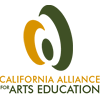Securing local business partners for arts education advocacy
 The Challenge: How can I get local businesses to support arts education advocacy efforts?
The Challenge: How can I get local businesses to support arts education advocacy efforts?
The Strategy: 1. Ask 2. Ask smart.
The Story: Business support for the arts is a long standing tradition, but asking a local business to get involved in your arts advocacy effort may seem like a more difficult sell.
Yet for Nick Rail Music, spreading the word about the opportunity presented by the new Local Control Funding Formula (LCFF) just made good business sense. With six music stores in Southern California, specializing in selling, renting and repairing band and orchestral instruments mainly to schools, they understood the impact LCFF could have on music programs in local schools and, in turn on their business. At the same time, they were finding that many of their customers were simply not aware of what was at stake.
“California has made a fundamental change in how our school districts will be funded by shifting decision-making power to the local level, with community input not only encouraged, but required," said Nick Rail, president of the company. "We want to make sure that music education advocates, boosters, parents and educators are aware of this great (and unprecedented) opportunity to make their voices heard in a very meaningful way at the local school district level.”
To spread the word, his sales staff began bringing information about LCFF to all of their customers, which included a personal letter from Nick Rail and the California Alliance for Arts Education’s LCFF flyer connecting the benefits of arts education with specific LCFF goals. The company also shared these materials with customers at the California Music Educators Association conference last month.
According to Americans for the Arts’ Business Community for the Arts (BCA) National Survey of Business Support, business leaders give to the arts for two reasons:
1. Someone asked. 66% of business leaders surveyed in the AFTA survey had never been asked to support an arts cause. This indicates that there is lots of untapped potential for arts support. As with any donor relationship, local arts causes should start by building relationships and getting to know the business to better understand what benefits might be most attractive to them.
2. Someone asked smart. Once you’ve learned more about a business, you’ll be in a better position to make a smart ask. According to AFTA’s survey, businesses support a cause because of a perceived benefit to their business. The most persuasive being an increase in profitability. But business leaders were also inclined to give if there was a benefit to employees and their families for example:
- The arts improve the quality of life in the community
- The arts help create a vibrant community and society
- The arts improve academic performance for students
- Arts organizations offer education initiatives that benefit the community
For Nick Rail Music, spreading the word about LCFF was critical to their business success. You may not have to look too far in your community to find local businesses who are ready to join the arts advocacy band.
Read more from the BCA National Survey of Business Support for the Arts here. Check out Americans for the Arts's The pARTnership Movement, which provides businesses and arts organizations with tools to make meaningful collaborations - partnerships that not only support a healthy, creative, and artistic community, but also give businesses a competitive advantage.










